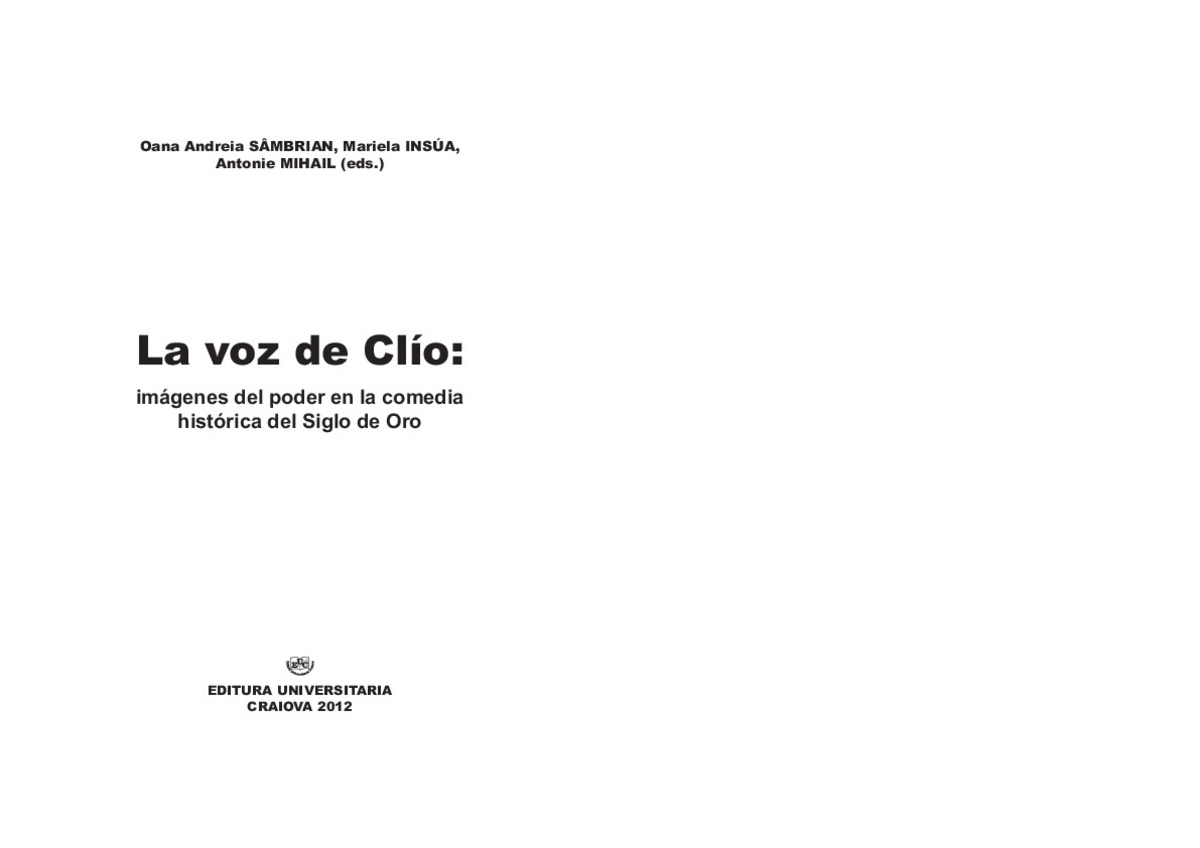Full metadata record
| DC Field | Value | Language |
|---|---|---|
| dc.creator | Arellano-Ayuso, I. (Ignacio) | - |
| dc.date.accessioned | 2013-10-21T07:54:28Z | - |
| dc.date.available | 2013-10-21T07:54:28Z | - |
| dc.date.issued | 2012 | - |
| dc.identifier.citation | Arellano, Ignacio, «La comedia historial de Bances Candamo», en O. A. Sambrian, M. Insúa, A. Mihail (ed.), ‘La voz de Clío: imágenes del poder en la comedia histórica del Siglo de Oro’, Craiova, Editura Universitaria, 2012, pp. 102-117. | es_ES |
| dc.identifier.isbn | 97860614046-5 | - |
| dc.identifier.uri | https://hdl.handle.net/10171/34239 | - |
| dc.description.abstract | For reading and understanding Golden Age drama, it is essential to keep in mind that literature and history are two different ways to approach reality. From Aristotle to Cascales or Pinciano, some authors have theorized about the prevalence of the first over the second. At this point, Bances Candamo divides comedy into two, depending on the content: history or love. Historical dramas have a deep didactic value, mainly aimed to teach the king (Carlos II) how to rule or/and glorify the monarchy, but always maintaining a sense of decorum. Some examples are ‘El Austria en Jerusalén’, ‘Duelos de Ingenio’ y ‘Fortuna´s’ loa or ‘La restauración de Buda’. | es_ES |
| dc.language.iso | spa | es_ES |
| dc.publisher | Editura Universitaria | es_ES |
| dc.rights | info:eu-repo/semantics/openAccess | es_ES |
| dc.subject | Materias Investigacion::Filología y Literatura::Literatura | es_ES |
| dc.subject | History | es_ES |
| dc.subject | Bances Candamo | es_ES |
| dc.subject | Politics | es_ES |
| dc.subject | Carlos II | es_ES |
| dc.subject | Court poet | es_ES |
| dc.subject | Didactics | es_ES |
| dc.subject | Comedy | es_ES |
| dc.title | La comedia historial de Bances Candamo | es_ES |
| dc.type | info:eu-repo/semantics/bookPart | es_ES |
| dc.type.driver | info:eu-repo/semantics/bookPart | es_ES |
Files in This Item:
Statistics and impact
Items in Dadun are protected by copyright, with all rights reserved, unless otherwise indicated.






